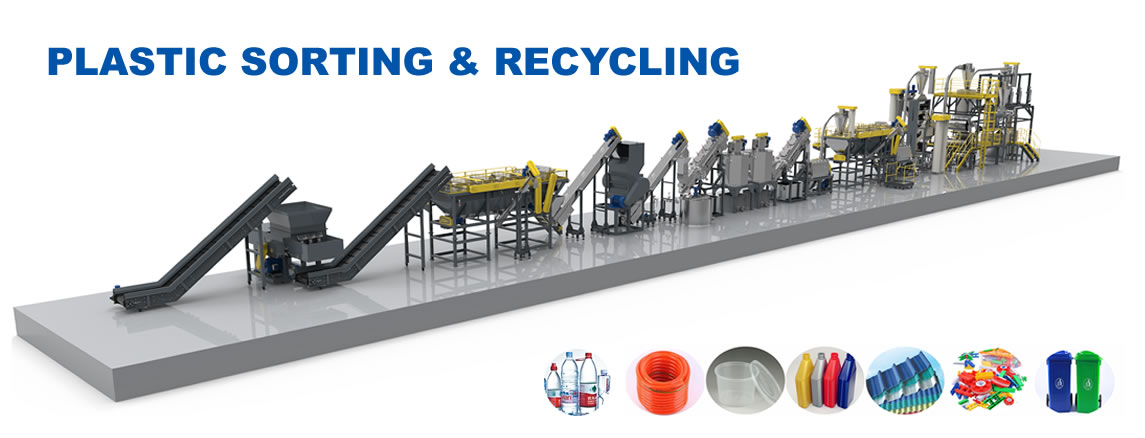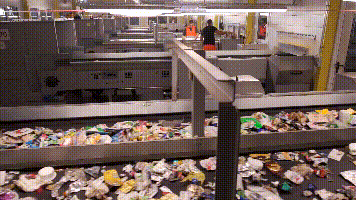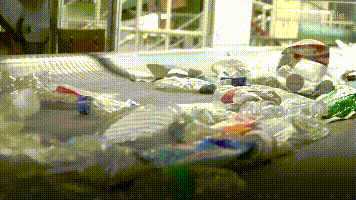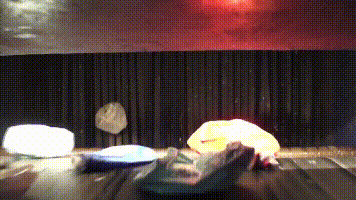Plastic Sorting Machine: Revolutionizing Recycling
LEADING WASTE SORTING AND RECYCLING EQUIPMENTS PROVIDER
Plastic Sorting Machine Combining Hyperspectral Imaging and Artificial Intelligence
Optical sorting machine combining hyperspectral imaging and artificial intelligence uses a broad-spectrum light source to illuminate plastics, capturing detailed spectral information across hundreds of narrow bands with hyperspectral cameras. This spectral data, unique to each type of plastic, is processed in real-time by AI algorithms trained on extensive datasets. The AI classifies the plastics based on their spectral signatures, and the system uses air jets or robotic arms to sort the plastics into appropriate categories. This integration significantly enhances sorting accuracy and efficiency, making recycling processes more effective and reliable.
Introduction of Plastic Sorting Machine
Plastic sorting machines are innovative technologies that have revolutionized the recycling industry. By automating the process of segregating plastic waste, these machines have significantly enhanced efficiency and sustainability in waste management practices. With the escalating global concern over plastic pollution, the demand for effective recycling solutions has never been greater. Plastic sorting machines address this challenge by streamlining the sorting process, maximizing material recovery rates, and reducing reliance on manual labor.

Plastic sorting machine utilize a combination of sophisticated sensors, sorting algorithms, and mechanical mechanisms to analyze and categorize plastic waste based on various criteria, such as type, color, and shape. Once sorted, the plastics are directed into different streams for further processing, ensuring that each type is appropriately recycled or repurposed. This not only increases the overall efficiency of the recycling process but also improves the quality of recycled materials, contributing to a more sustainable circular economy.
The development and widespread adoption of plastic sorting machines represent a significant milestone in the journey towards a more sustainable future. By harnessing the power of technology and innovation, these machines have become indispensable tools in the global effort to combat plastic pollution, conserve natural resources, and promote environmental sustainability. As recycling becomes increasingly vital in addressing the environmental challenges of the 21st century, the role of plastic sorting machines will continue to grow in importance, shaping the future of waste management and resource recovery.
In conclusion, plastic sorting machines are not just technological advancements; they are catalysts for change. By enabling efficient and effective recycling of plastic waste, these machines are driving progress towards a more sustainable and resilient world. As we continue to confront the complex challenges of plastic pollution and resource depletion, the importance of plastic sorting machines in achieving our sustainability goals cannot be overstated.
Benefits of Plastic Sorting Machine
The benefits of plastic sorting machines are multifaceted and far-reaching:
- Increased Recycling Efficiency: Plastic sorting machines streamline the recycling process, allowing for faster and more accurate sorting of plastic waste. This leads to higher recycling efficiency and throughput.
- Maximized Material Recovery Rates: By accurately sorting plastics into different categories, these machines maximize the recovery of valuable materials, reducing waste and conserving resources.
- Reduction in Manual Labor: Automation of the sorting process reduces the need for manual labor, minimizing labor costs and improving workplace safety.
- Improved Quality of Recycled Materials: The precise sorting capabilities of these machines result in higher-quality recycled materials, suitable for a wide range of applications.
- Environmental Benefits: In addition to the economic advantages, plastic sorting machines offer significant environmental benefits, including reduced energy consumption, greenhouse gas emissions, and environmental pollution.
Advanced Technologies Revolutionize Plastic Sorting Processes
Plastic sorting machines employ a combination of advanced technologies and mechanical processes to achieve efficient sorting:
- Sensor Technology: Sophisticated sensors, such as near-infrared sensors and optical scanners, are used to analyze the properties of plastic waste, including type, color, and composition.
- Sorting Algorithms: Powerful algorithms process the data collected by the sensors and determine the appropriate sorting criteria for each piece of plastic.
- Mechanical Sorting Mechanisms: Mechanical components, such as conveyor belts, air jets, and robotic arms, physically separate the plastic waste into different streams based on the predetermined criteria.
- Integration with Other Technologies: Plastic sorting machines are often integrated with other technologies, such as artificial intelligence and data analytics, to enhance efficiency and accuracy in the sorting process.
- Scalability and Flexibility: These machines are designed to be scalable and adaptable to various waste management needs, from small-scale recycling facilities to large industrial operations.
Impact on Sustainability
The adoption of plastic sorting machines has a profound impact on sustainability and environmental conservation:
- Reducing Plastic Pollution: By facilitating efficient recycling, these machines help prevent plastic waste from polluting the environment, including oceans, rivers, and landfills.
- Conserving Natural Resources: Maximizing material recovery rates reduces the need for virgin plastic production, conserving valuable natural resources such as crude oil and natural gas.
- Minimizing Landfill Waste: Effective sorting and recycling divert plastic waste away from landfills, reducing the burden on waste management infrastructure and extending landfill lifespans.
- Promoting Circular Economy Principles: Plastic sorting machines support the transition to a circular economy by enabling the efficient reuse and recycling of plastic materials, closing the loop on resource consumption and waste generation.
- Community Engagement: The implementation of plastic sorting machines often involves community engagement and education initiatives, raising awareness about recycling and environmental stewardship.
Conclusion
Plastic sorting machines represent a pivotal innovation in the field of recycling and waste management. By combining cutting-edge technology with sustainability principles, these machines play a crucial role in addressing the global plastic pollution crisis and advancing the circular economy agenda. As the demand for sustainable solutions continues to grow, the importance of plastic sorting machines in achieving a more resource-efficient and environmentally responsible future cannot be overstated.
As we look ahead to the future, it is clear that plastic sorting machines will remain indispensable tools in our collective efforts to build a more sustainable world. By harnessing the power of innovation and collaboration, we can overcome the challenges of plastic pollution and create a cleaner, healthier planet for future generations.
FLEXIBLE SORTING TECHNOLOGY AND SOLUTION

Manual Sorting Solutions
Belt ConveyorManual Sorting Room
For countries with low labor costs, a combination of mechanical and manual sorting can be used, which is a cost-effective waste sorting and recycling solution.
Read More
AI Robot Sorting Solutions
AI SortingSorting Robot
The artificial intelligence sorting robot with autonomous learning can practice and accumulate sorting data. It can effectively sort various high-value recyclables.
Read More
Optical Sorting Solutions
Optical Sorting
Optical sorter is a automatic sorting device based on sensors, high-speed ejector valve has large processing capacity. It is a good choice for bulk handling project of waste recycling.
Read More